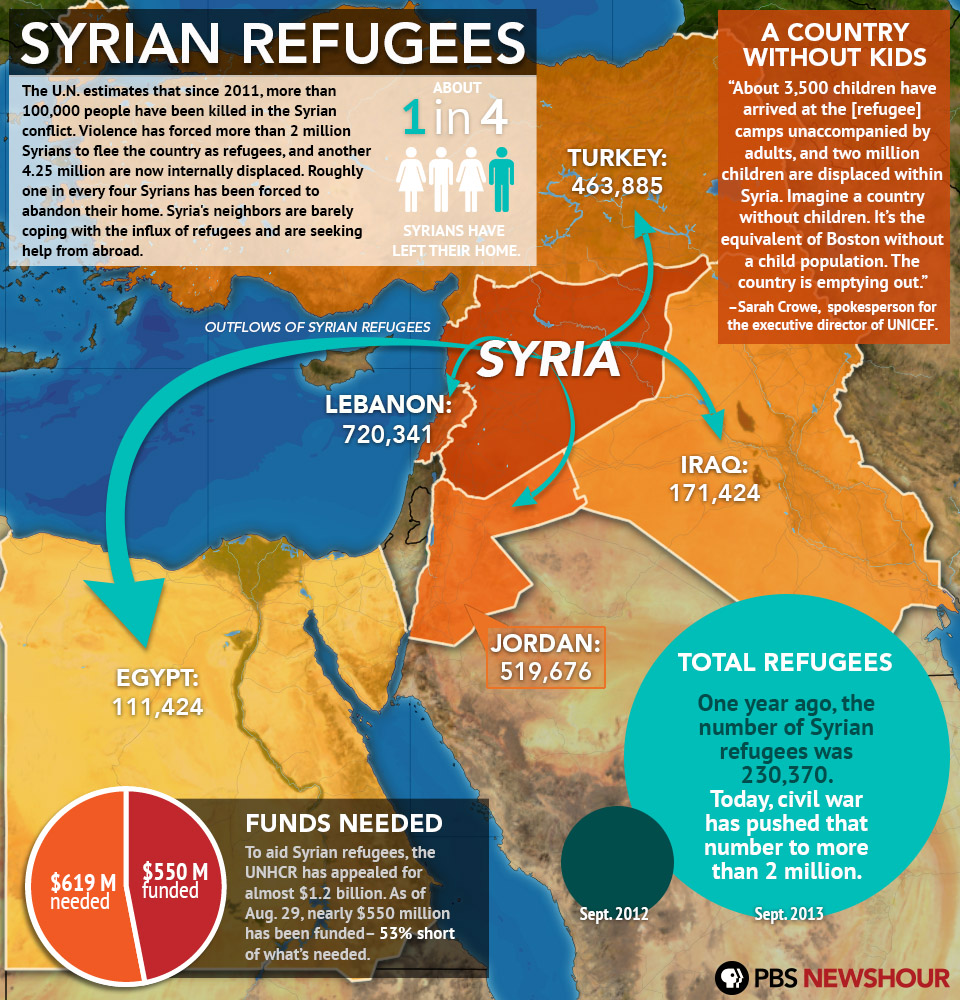Since the armed conflict began in Syria, an estimated 100,000 people have been killed, and as many as 2 million people had fled the nation seeking refuge in neighboring countries. The majority of the refugees had fled to neighboring Lebanon, Turkey, and Jordan. Egypt and Iraq have seen an influx of Syrian refugees as well.
Additionally, another 4 million people had been internally displaced, roughly 1 of every 4 inhabitants, including an estimated 2 million children.
Source: PBS: Syrian Refugees



